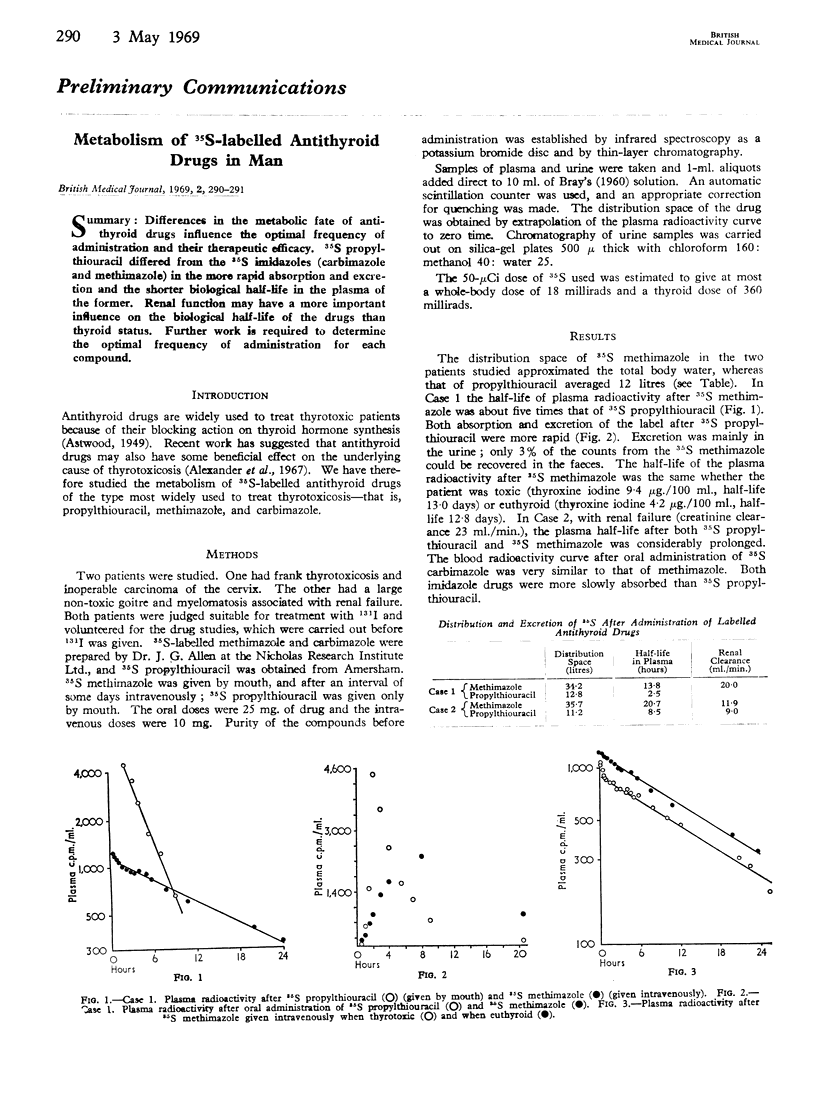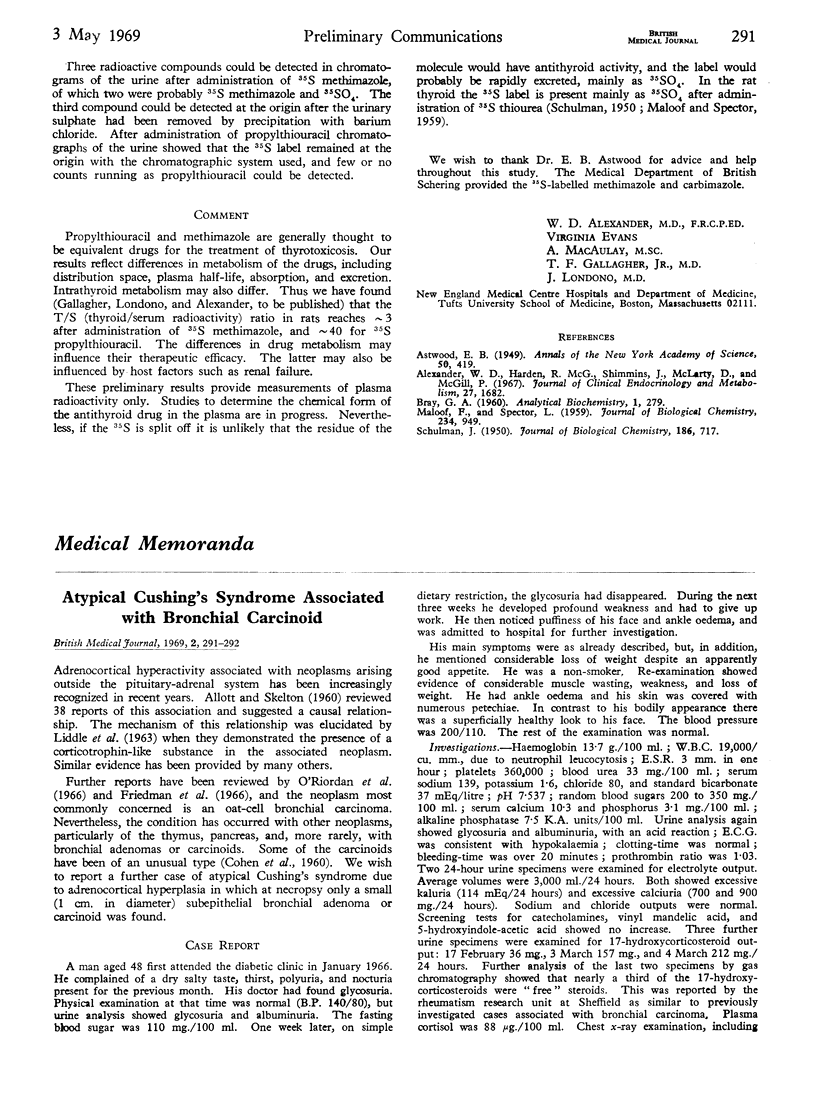Abstract
Differences in the metabolic fate of antithyroid drugs influence the optimal frequency of administration and their therapeutic efficacy. 35S propylthiouracil differed from the 35S imidazoles (carbimazole and methimazole) in the more rapid absorption and excretion and the shorter biological half-life in the plasma of the former. Renal function may have a more important influence on the biological half-life of the drugs than thyroid status. Further work is required to determine the optimal frequency of administration for each compound.
Full text
PDF

Selected References
These references are in PubMed. This may not be the complete list of references from this article.
- Alexander W. D., Harden R. M., Shimmins J., McLarty D., McGill P. Development of thyroidal suppression by triiodothyronine during six months' treatment of thyrotoxicosis with antithyroid drugs. J Clin Endocrinol Metab. 1967 Dec;27(12):1682–1689. doi: 10.1210/jcem-27-12-1682. [DOI] [PubMed] [Google Scholar]
- MALOOF F., SPECTOR L. The desulfuration of thiourea by thyroid cytoplasmic particulate fractions. J Biol Chem. 1959 Apr;234(4):949–954. [PubMed] [Google Scholar]
- SCHULMAN J., Jr Studies on the metabolism of thiourea. II. The metabolic fate of thiourea in the thyroid gland. J Biol Chem. 1950 Oct;186(2):717–723. [PubMed] [Google Scholar]


